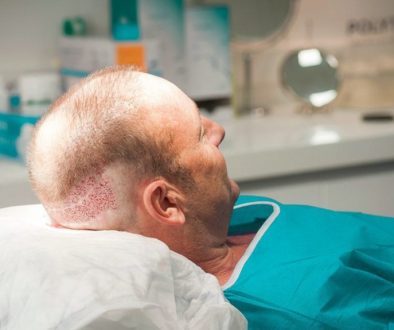Hair Loss? The Importance of Protecting Your Balding Scalp from the Sun
This insightful article was written by Dr. William Lindsey of Reston, VA who is one of our recommended hair restoration physicians.
 This week I was reviewing my hair transplant procedure records and came across an interesting finding. We have had 9 hair loss patients who presented for consultation who on examination, were found to have skin cancer on their scalp who were treated and subsequently had hair replacement surgery at our office. I would guess that I have had twice that number who were referred out for the skin cancer treatment and didn’t proceed with hair surgery.
This week I was reviewing my hair transplant procedure records and came across an interesting finding. We have had 9 hair loss patients who presented for consultation who on examination, were found to have skin cancer on their scalp who were treated and subsequently had hair replacement surgery at our office. I would guess that I have had twice that number who were referred out for the skin cancer treatment and didn’t proceed with hair surgery.
Recall that the 3 types of skin cancer are basal cell carcinoma, squamous cell carcinoma, and melanoma. Basal cell and squamous cell are related to sun exposure and often present as a pearly white or scaly plaque-like areas that may itch, hurt or bleed. Melanomas are thought to be contributed by sun exposure although many melanomas occur in places not exposed to direct sunlight including the retina of the eye, nasal cavity, and peri-anal areas. Melanomas are often lesions that are like dark moles and patients should look for the A,B,C and D warning signs on there moles. A is for asymmetry, B is for border irregularity, C is for color change or variation within the lesion and D is for diameter larger than a pencil eraser.
Everyone should have their family doctor do a thorough skin check yearly and people should check themselves periodically. Since sun exposure is contributory to 2 of the skin cancer types, and likely contributes to the third type as well, everyone should follow sun precautions such as sunscreens containing zinc oxide and wearing a wide brim hat.
For patients with thinning hair, that hat instruction is particularly important, and don’t hesitate to apply sunscreen on the crown. Finally, it is hard for patients to self examine the balding crown, even with 2 mirrors, so get checked yearly.
As to the patients who have had hair restoration surgery after skin cancer surgery, we have had uniformly good results; but we wait 6 months or more, to allow for sufficient healing and adequate circulation restoration in any operated upon areas. And, if someone has had 1 skin cancer on the scalp (or anywhere) they have likely enough sun exposure to have another at some point in the future, so continued followups with the dermatologist or family doctor yearly are very important.
William Lindsey, M.D.
—
Bill
Associate Publisher
Technorati Tags: hair transplant, hair loss, hair replacement, hair surgery, thinning hair, balding, hair restoration



